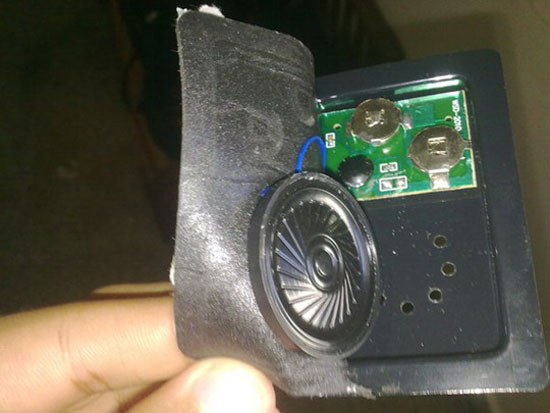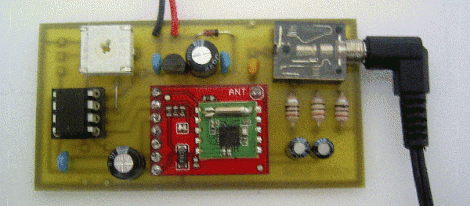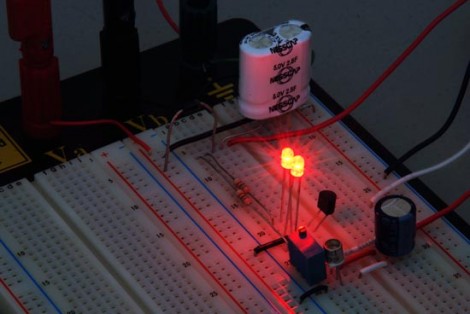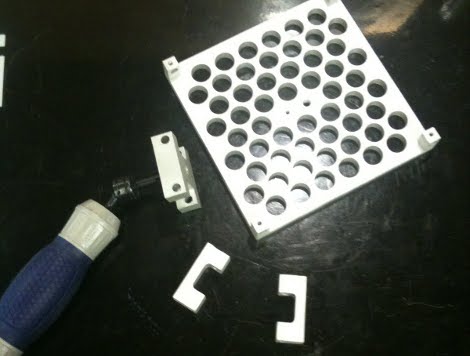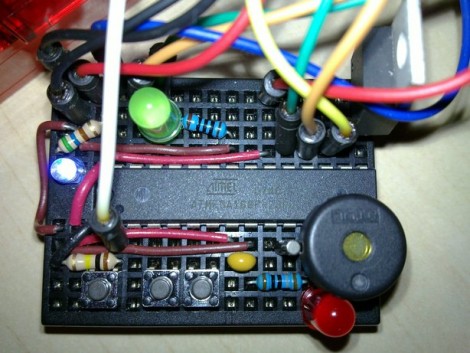
Normally when we feature a clock made with a 32×8 LED matrix we’d load up an image of the display for the banner photo. But this time around we were so impressed by [JB’s] breadboard work we had to use this image. We see an ATmega168, three buttons, three LEDs, a piezo buzzer, 32.768 kHz crystal, smoothing capacitor, and a few resistors; everything he needed to keep time and display it on the matrix module. If this is just going to sit on your bookshelf for a while it’s a great alternative to point-to-point soldering on a protoboard. Nice work fitting it all on there [JB].

